Related Research Articles

A bestiary is a compendium of beasts. Originating in the ancient world, bestiaries were made popular in the Middle Ages in illustrated volumes that described various animals and even rocks. The natural history and illustration of each beast was usually accompanied by a moral lesson. This reflected the belief that the world itself was the Word of God and that every living thing had its own special meaning. For example, the pelican, which was believed to tear open its breast to bring its young to life with its own blood, was a living representation of Jesus. Thus the bestiary is also a reference to the symbolic language of animals in Western Christian art and literature.
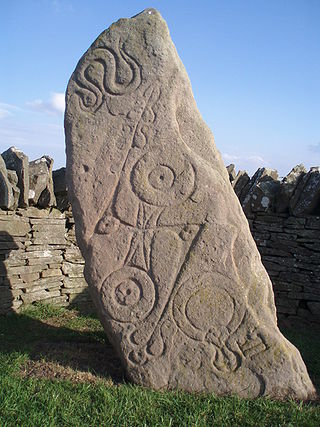
The Picts were a group of peoples who lived in Britain north of the Forth–Clyde isthmus in the Pre-Viking, Early Middle Ages. Where they lived and details of their culture can be inferred from early medieval texts and Pictish stones. The term Picti appears in written records as an exonym from the late third century AD, but was adopted as an endonym in the late seventh century during the Verturian hegemony. This lasted around 160 years until the succession of the Alpínid dynasty, when the Pictish kingdom merged with that of Dál Riata to form the Kingdom of Alba. The concept of "Pictish kingship" continued for a few decades until it was abandoned entirely as a contemporary signifier during the reign of Caustantín mac Áeda.

Marischal College is a large granite building on Broad Street in the centre of Aberdeen in north-east Scotland, and since 2011 has acted as the headquarters of Aberdeen City Council. However, the building was constructed for and is on long-term lease from the University of Aberdeen, which still uses parts of the building to store its museum collections. Today, it provides corporate office space and public access to council services, adjacent to the Town House, the city's historic seat of local government. Many Aberdonians consider Marischal College to be an icon of the "Granite City" and to symbolise the zenith of Aberdeen's granite-working industry.
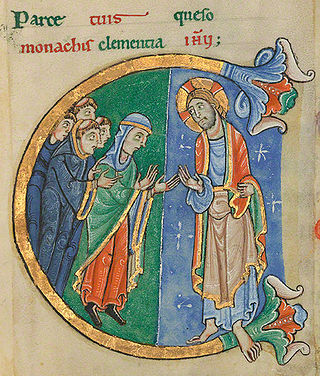
Christina of Markyate was born with the name Theodora in Huntingdon, England, about 1096–1098 and died about 1155. She was an anchoress, who came from a wealthy English family trying to accommodate with the Normans at that time. She later became the prioress of a community of nuns.

The Aberdeen Breviary is a 16th-century Scottish Catholic breviary. It was the first full-length book to be printed in Edinburgh, and in Scotland.
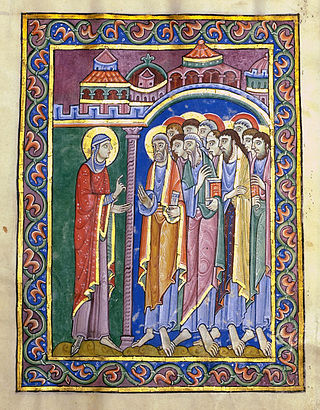
The St Albans Psalter, also known as the Albani Psalter or the Psalter of Christina of Markyate, is an English illuminated manuscript, one of several psalters known to have been created at or for St Albans Abbey in the 12th century. It is widely considered to be one of the most important examples of English Romanesque book production; it is of almost unprecedented lavishness of decoration, with over forty full-page miniatures, and contains a number of iconographic innovations that would endure throughout the Middle Ages. It also contains the earliest surviving example of French literature, the Chanson de St Alexis or Vie de St Alexis, and it was probably commissioned by an identifiable man and owned by an identifiable woman. Since the early 19th century it has been owned by the church of St. Godehard in Hildesheim, Lower Saxony in northwestern Germany, but is now stored and administered at the nearby Dombibliothek in Hildesheim Cathedral. A single leaf from the manuscript is at the Schnütgen Museum, Cologne; one further leaf, and one further cutting, are missing from the volume, their whereabouts unknown.

The Tap o' Noth is a hill and fort, 8 miles south of Huntly in Aberdeenshire, Scotland at grid reference NJ485293. It is the second highest fort in Scotland and its main feature is its well-preserved vitrified wall which encloses an area of approximately 100 m by 30 m, 0.3 hectares. Archaeological finds from the site include a stone axe head dated to between c. 2000 BC– c.800 BC, and a decorated bronze rein-ring dated to the 1st–3rd century AD. The site has been designated a scheduled ancient monument.

St Peter's Church is situated in Old Woking, Surrey, England. It is recorded in the Domesday Book. It also has the third oldest surviving door in the British Isles. It also has the oldest door in Surrey.

Geoffrey de Gorham, sometimes called Geoffrey of Dunstable or of Le Mans, was a Norman scholar who became Abbot of St Albans Abbey, 1119 to 1146.

The University of Aberdeen School of Law is the law school of University of Aberdeen, located in Aberdeen, Scotland. Established in 1495, it is consistently ranked among the top 10 law schools in the United Kingdom.

Kinneddar is a small settlement on the outskirts of Lossiemouth in Moray, Scotland, near the main entrance to RAF Lossiemouth. Long predating the modern town of Lossiemouth, Kinneddar was a major monastic centre for the Pictish kingdom of Fortriu from the 6th or 7th centuries, and the source of the important collection of Pictish stones called the Drainie Carved Stones. The Kirk of Kinneddar was the cathedral of the Diocese of Moray between 1187 and 1208, and remained an important centre of diocesan administration and residence of the Bishop of Moray through the 13th and 14th centuries.
Aberdeen Student Show is a comedy musical and theatrical show, staged annually in Aberdeen, Scotland.
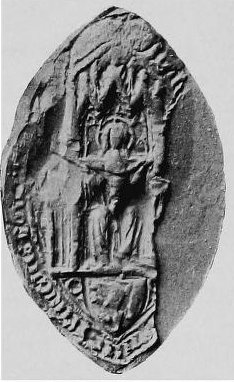
Markyate Priory was a Benedictine priory in Bedfordshire, England. It was established in 1145 and disestablished in 1537.

King's Museum is a small university museum operated by the University of Aberdeen and located in the Old Town House in Old Aberdeen, Scotland.
Alexander Ebenezer McLean Geddes OBE FRSE was a Scottish meteorologist and physicist. He was generally known as Sandy Geddes and nicknamed Siccer Sandy.
Margaret Troup Gray was a teacher, translator, and missionary, from Aberdeen. She concentrated on teaching, studying the Chinyanja language, and producing religious and educational material in that language. During visits to Scotland she was in great demand as a speaker.
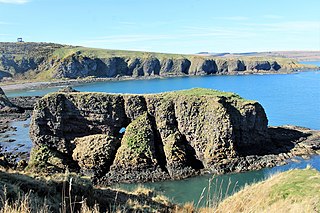
Dunnicaer, or Dun-na-caer, is a precipitous sea stack just off the coast of Aberdeenshire, Scotland, between Dunnottar Castle and Stonehaven. Despite the unusual difficulty of access, in 1832 Pictish symbol stones were found on the summit and 21st-century archaeology has discovered evidence of a Pictish hill fort which may have incorporated the stones in its structure. The stones may have been incised in the third or fourth centuries AD but this goes against the general archaeological view that the simplest and earliest symbol stones date from the fifth or even seventh century AD.
Sally M. Foster is a Scottish archaeologist and senior lecturer at the University of Stirling. She specialises in the archaeology of Scotland, particularly the Picts and their neighbours in the early medieval period.
Jane Reid is an evolutionary ecologist from the UK, she is International Chair Professor at the Norwegian University of Science and Technology (NTNU) in Trondheim, Norway and is also Professor of Population & Evolutionary Ecology at the University of Aberdeen.
George David Smith Henderson is a British art historian, author, and Emeritus Professor of Medieval Art at the University of Cambridge. He is a Fellow of The Society of Antiquaries of London and a member of the Association of Art Historians. He was awarded the Reginald Taylor Prize by the British Archaeological Association in 1962 for his paper "The Sources of the Genesis Cycle at St.-Savin-sur-Gartempe".
References
- 1 2 3 "Professor Jane Geddes | Staff Profile | People | The University of Aberdeen". www.abdn.ac.uk. Retrieved 1 July 2020.
- 1 2 3 4 "Person Page:Dr. Hon. David Campbell Geddes". www.thepeerage.com. Retrieved 1 July 2020.
- 1 2 "Person Page: Jane Geddes". www.thepeerage.com. Retrieved 26 August 2020.
- ↑ "Hunting Picts | Lead Public Body for Scotland's Historic Environment". www.historicenvironment.scot. Retrieved 2 July 2020.
- ↑ Niebrzydowski, Sue (2011). Middle-aged Women in the Middle Ages. D. S. Brewer. p. xi. ISBN 978-1-84384-282-8.
- ↑ Jane Geddes; Michael Arnott & Kim Downie (30 June 2003). "The St Albans Psalter Project. University of Aberdeen". www.abdn.ac.uk. Retrieved 1 July 2020.
{{cite web}}: CS1 maint: multiple names: authors list (link) - ↑ "St Albans Psalter. Acknowledgements. University of Aberdeen". www.abdn.ac.uk. Retrieved 2 July 2020.
- 1 2 Stirnemann, Patricia (2008). "Review of The St Albans Psalter: A Book for Christina of Markyate". Studies in Iconography. 29: 258–262. ISSN 0148-1029. JSTOR 23924153.
- ↑ "Double Standards: Who Owned The St Albans Psalter? | Postcards from the Archives". blogs.surrey.ac.uk. Retrieved 2 July 2020.
- ↑ Geddes, Jane (27 July 2017). Hunting Picts: Medieval Sculpture at St Vigeans, Angus. Historic Environment Scotland. ISBN 978-1-84917-226-4.
- ↑ Geddes, Jane (14 April 2016). Medieval Art, Architecture and Archaeology in the Dioceses of Aberdeen and Moray. Routledge. ISBN 978-1-317-24806-4.
- ↑ Blacker, Beasts & the Bestiary: The Inaugural Temenos Thetis Blacker Memorial Lecture (Temenos Academy Papers): Amazon.co.uk: Geddes, Jane: 9780956407849: Books. ASIN 0956407846.
- ↑ Geddes, Jane (2005). The St Albans Psalter: A Book for Christina of Markyate. British Library. ISBN 9780712306775.
- ↑ Geddes, Jane (1999). Medieval Decorative Ironwork in England. Society of Antiquaries of London. ISBN 978-0-85431-273-3.